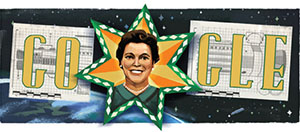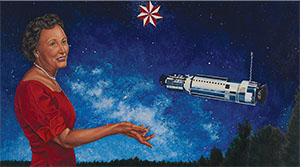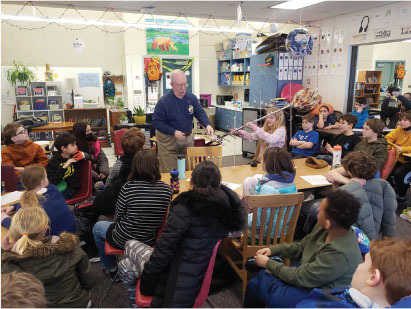September/October 2018
Variables
Surprise! Pioneering PE Honored with Doodle
Over the last 20 years, Google has celebrated holidays, anniversaries, and notable people by decorating its logo with illustrations to honor them. On August 9, Mary Ross, P.E., the first female engineer employed by Lockheed Missiles and Space Company and a Cherokee citizen, was the focus of the “Google Doodle.” It was the 110th anniversary of her birth.
Ross’s contributions to the aerospace industry, according to the Google explainer, included “the development of concepts for interplanetary space travel, manned and unmanned earth-orbiting flights, and orbiting satellites.” She worked on the Agena rocket, an important step in landing on the moon, and the Poseidon and Trident missiles. Much of her work remains classified.
Ross was the great-great-granddaughter of Chief John Ross, who led the Cherokees on their Trail of Tears—the forced relocation march from the southeastern US to Oklahoma in the late 1830s.
During her life, Ross was matter-of-fact about her accomplishments. She earned undergraduate and graduate degrees in mathematics and explained that education for both girls and boys is a Cherokee value. In an interview, she said that she “didn’t mind being the only girl in math class. Math, chemistry, and physics were more fun to study than any other subject.”
Ross taught high school math and science before joining Lockheed Aircraft in 1942 as a mathematician. Her manager, recognizing her talent, encouraged her to become an engineer. She took extension classes in aeronautical engineering at UCLA and received her California PE license in 1949.
During World War II, Ross joined a top-secret think tank called Skunk Works, which later evolved into Lockheed Missiles and Space Company. She was one of 40 engineers at Skunk Works, the only woman and only American Indian. There she helped develop design concepts for space travel, such as flyby missions to Venus and Mars.
According to the National Science Foundation, just 0.1% of those working in science and engineering are currently female American Indians. During her life, Ross was a role model and mentor, working closely with the American Indian Science and Engineering Society, which named her an honorary life member. She was also an active member and fellow of the Society of Women Engineers and the namesake for the Mary G. Ross Scholarship, administered by SWE’s Santa Clara Valley Section. She was inducted into the Silicon Valley Engineering Hall of Fame in 1992.
At the opening of the Smithsonian National Museum of the American Indian in Washington, D.C., in 2004, the 96-year-old Ross rose from her electric wheelchair and walked in the opening procession.


 Volunteering at NSPE is a great opportunity to grow your professional network and connect with other leaders in the field.
Volunteering at NSPE is a great opportunity to grow your professional network and connect with other leaders in the field. The National Society of Professional Engineers (NSPE) encourages you to explore the resources to cast your vote on election day:
The National Society of Professional Engineers (NSPE) encourages you to explore the resources to cast your vote on election day: “GOOGLE DOODLE” OF MARY ROSS, P. E.
“GOOGLE DOODLE” OF MARY ROSS, P. E. THIS PORTRAIT OF MARY G. ROSS, BY AMERICA MEREDITH, IS FROM THE COLLECTION OF THE SMITHSONIAN NATIONAL MUSEUM OF THE AMERICAN INDIAN. CREDIT: NATIONAL MUSEUM OF THE AMERICAN INDIAN
THIS PORTRAIT OF MARY G. ROSS, BY AMERICA MEREDITH, IS FROM THE COLLECTION OF THE SMITHSONIAN NATIONAL MUSEUM OF THE AMERICAN INDIAN. CREDIT: NATIONAL MUSEUM OF THE AMERICAN INDIAN
